-
 Bitcoin
Bitcoin $102,263.5859
-1.46% -
 Ethereum
Ethereum $2,566.0353
-4.03% -
 Tether USDt
Tether USDt $1.0001
0.06% -
 XRP
XRP $2.4938
-3.58% -
 BNB
BNB $646.6215
-2.34% -
 Solana
Solana $173.5107
-5.43% -
 USDC
USDC $0.9999
0.00% -
 Dogecoin
Dogecoin $0.2272
-6.30% -
 Cardano
Cardano $0.7832
-5.16% -
 TRON
TRON $0.2705
-1.77% -
 Sui
Sui $3.7791
-5.95% -
 Chainlink
Chainlink $16.4934
-4.88% -
 Avalanche
Avalanche $24.0603
-8.90% -
 Stellar
Stellar $0.2997
-4.54% -
 Shiba Inu
Shiba Inu $0.0...01516
-7.27% -
 Hedera
Hedera $0.2009
-6.70% -
 Hyperliquid
Hyperliquid $24.6494
-5.77% -
 UNUS SED LEO
UNUS SED LEO $8.8670
0.52% -
 Toncoin
Toncoin $3.1869
-6.40% -
 Bitcoin Cash
Bitcoin Cash $392.6412
-4.13% -
 Polkadot
Polkadot $4.8429
-6.98% -
 Litecoin
Litecoin $97.9013
-5.84% -
 Monero
Monero $342.2481
-0.57% -
 Pi
Pi $0.8659
-31.28% -
 Pepe
Pepe $0.0...01360
-5.16% -
 Bitget Token
Bitget Token $4.7252
-2.55% -
 Dai
Dai $1.0000
0.01% -
 Ethena USDe
Ethena USDe $1.0003
-0.01% -
 Uniswap
Uniswap $6.4568
-6.36% -
 Bittensor
Bittensor $432.8428
-7.51%
How to choose an ASIC miner? What are the key parameters to look at?
When choosing an ASIC miner, consider hash rate, power consumption, price, algorithm compatibility, noise level, cooling, manufacturer support, size, network connectivity, and profitability.
May 15, 2025 at 11:29 am
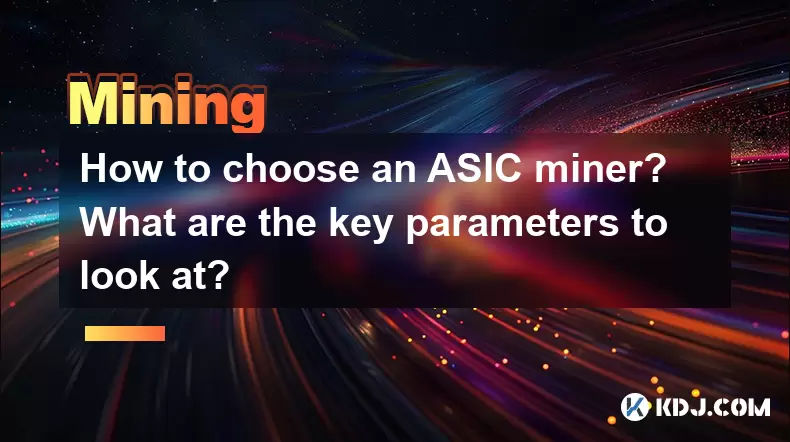
Choosing an ASIC miner involves understanding several key parameters that directly affect the profitability and efficiency of your mining operations. ASIC, or Application-Specific Integrated Circuit, miners are designed specifically for mining cryptocurrencies, offering superior performance compared to general-purpose hardware. Here, we'll delve into the essential factors to consider when selecting an ASIC miner.
Hash Rate
The hash rate is a critical parameter that measures the computational power of an ASIC miner. It indicates how many calculations the miner can perform per second, typically measured in hashes per second (H/s). The higher the hash rate, the more likely you are to solve the cryptographic puzzles required to mine blocks and earn rewards.
- Higher hash rates generally lead to higher mining rewards, but they also consume more power.
- When choosing an ASIC miner, compare the hash rates of different models to understand their performance potential.
Power Consumption
Power consumption is another crucial factor to consider. It is measured in watts (W) and indicates how much electricity the miner uses. Efficient miners with lower power consumption can significantly reduce operational costs.
- Energy efficiency is often expressed as the ratio of hash rate to power consumption (H/J or J/TH). A lower value indicates better efficiency.
- Calculate the cost of electricity in your area and compare it with the miner's power consumption to estimate operational costs.
Price
The price of an ASIC miner is a straightforward but important consideration. It determines the initial investment required to start mining.
- Compare the prices of different models and consider the total cost of ownership, including electricity and maintenance.
- Some miners may be more expensive but offer better long-term value due to their efficiency and performance.
Algorithm Compatibility
Algorithm compatibility is essential, as different cryptocurrencies use different mining algorithms. Ensure that the ASIC miner you choose supports the algorithm of the cryptocurrency you intend to mine.
- For example, Bitcoin uses the SHA-256 algorithm, while Litecoin uses Scrypt.
- Some ASIC miners are designed to work with multiple algorithms, offering more flexibility.
Noise Level
The noise level of an ASIC miner can be a significant factor, especially if you plan to operate the miner in a residential area.
- ASIC miners can be quite loud, with noise levels often measured in decibels (dB).
- Consider models with lower noise levels or plan to use noise-reduction solutions like soundproof enclosures.
Cooling and Durability
Cooling and durability are important for the longevity and performance of your ASIC miner. Effective cooling systems help prevent overheating and maintain consistent performance.
- Look for miners with reliable cooling solutions, such as fans or liquid cooling.
- Consider the build quality and durability of the miner, as frequent repairs can increase costs.
Manufacturer and Support
The manufacturer and support offered can greatly impact your experience with an ASIC miner. Reputable manufacturers often provide better customer support and warranty options.
- Research the reputation of the manufacturer and read reviews from other miners.
- Check if the manufacturer offers technical support and how responsive they are to customer inquiries.
Size and Form Factor
The size and form factor of an ASIC miner can affect where and how you can set it up. Some miners are more compact and easier to integrate into existing setups.
- Consider the dimensions and weight of the miner, especially if space is a concern.
- Some miners are designed for rack mounting, which can be beneficial for larger mining operations.
Network Connectivity
Network connectivity is essential for ensuring that your ASIC miner can communicate with the blockchain network. Most miners use Ethernet connections, but some may offer Wi-Fi options.
- Ensure that the miner supports the type of network connection you plan to use.
- Consider the reliability and speed of the network connection, as it can affect mining performance.
Profitability Calculators
Using profitability calculators can help you estimate the potential earnings from an ASIC miner. These tools take into account the hash rate, power consumption, electricity costs, and current cryptocurrency prices.
- Input the specifications of the miner and your local electricity rates to get an estimate of profitability.
- Regularly update the calculations to account for changes in cryptocurrency prices and mining difficulty.
Where to Buy
Finally, consider where to buy your ASIC miner. There are several options, including directly from the manufacturer, through authorized dealers, or on online marketplaces.
- Buying directly from the manufacturer can sometimes offer better warranty options and customer support.
- Authorized dealers may provide competitive prices and additional services.
- Online marketplaces can offer used miners at lower prices, but be cautious of scams and verify the condition of the miner before purchasing.
Frequently Asked Questions
Q: Can I use an ASIC miner to mine multiple cryptocurrencies?
A: Some ASIC miners are designed to be compatible with multiple algorithms, allowing you to mine different cryptocurrencies. However, most ASIC miners are optimized for a specific algorithm and cryptocurrency, so it's important to check the miner's specifications before purchasing.
Q: How do I know if an ASIC miner is profitable for me?
A: Use online profitability calculators to estimate the potential earnings based on the miner's hash rate, power consumption, and your local electricity costs. Remember to account for changes in cryptocurrency prices and mining difficulty, as these factors can significantly impact profitability.
Q: What should I do if my ASIC miner stops working?
A: If your ASIC miner stops working, first check the power supply and connections. If the issue persists, consult the manufacturer's troubleshooting guide or contact their customer support. Some issues may be resolved with a simple reset or firmware update, while others may require professional repair or replacement under warranty.
Q: Are there any environmental considerations when using ASIC miners?
A: Yes, ASIC miners consume significant amounts of electricity, which can have environmental impacts depending on the source of the electricity. Consider using renewable energy sources or participating in energy-efficient mining pools to reduce your environmental footprint.
Disclaimer:info@kdj.com
The information provided is not trading advice. kdj.com does not assume any responsibility for any investments made based on the information provided in this article. Cryptocurrencies are highly volatile and it is highly recommended that you invest with caution after thorough research!
If you believe that the content used on this website infringes your copyright, please contact us immediately (info@kdj.com) and we will delete it promptly.
- Catch BTFD at $0.0002 for 8900% ROI Potential Before It’s Gone—Moo Deng’s Wild Week and Turbo’s Quiet Rise Join the Top New Meme Coins to Buy This Week
- 2025-05-15 14:15:13
- Chainlink (LINK) Price Has Cooled Down from Last Week's Bullish Sentiment
- 2025-05-15 14:15:13
- Brave Wallet Expands Its Cryptocurrency Support to Include Cardano's ADA Token
- 2025-05-15 14:10:12
- Shiba Inu (SHIB) Price Prediction: Is the SHIB Dip a Buying Opportunity?
- 2025-05-15 14:10:12
- Bitcoin [BTC] Shows Significant Changes in Investor Behavior Since Mid-April
- 2025-05-15 14:05:13
- Pepe (PEPE) Price Prediction: Will the New Meme Coin King Reach a New ATH?
- 2025-05-15 14:05:13
Related knowledge
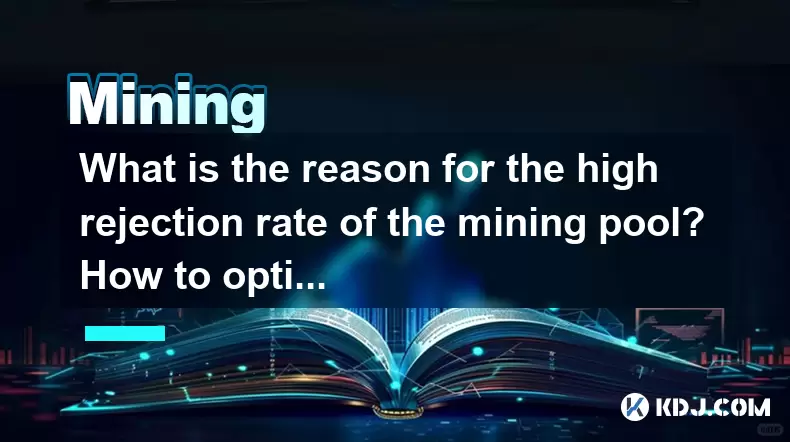
What is the reason for the high rejection rate of the mining pool? How to optimize?
May 15,2025 at 11:35am
The high rejection rate of a mining pool is a common concern for many cryptocurrency miners. Rejection rates refer to the percentage of submitted shares that are rejected by the mining pool. A high rejection rate can significantly impact a miner's profitability and efficiency. In this article, we will explore the reasons behind high rejection rates and ...
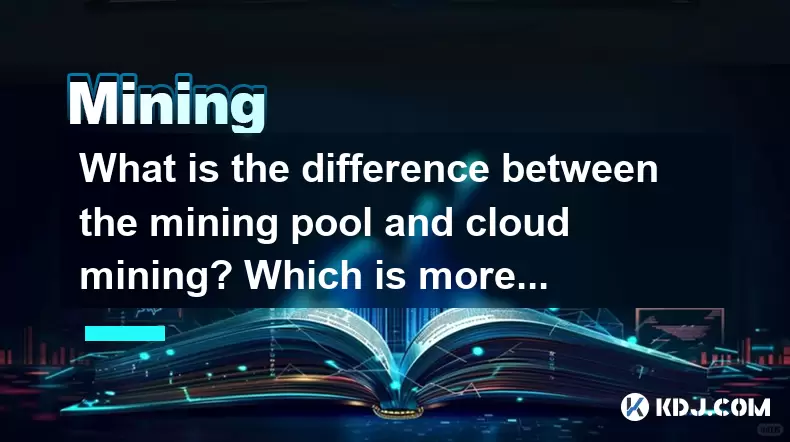
What is the difference between the mining pool and cloud mining? Which is more suitable for novices?
May 14,2025 at 08:56pm
Mining in the cryptocurrency world refers to the process of verifying transactions and adding them to the blockchain, which in turn releases new coins as a reward. Two popular methods of participating in this process are through mining pools and cloud mining. Both have their own set of characteristics, advantages, and disadvantages. This article aims to...
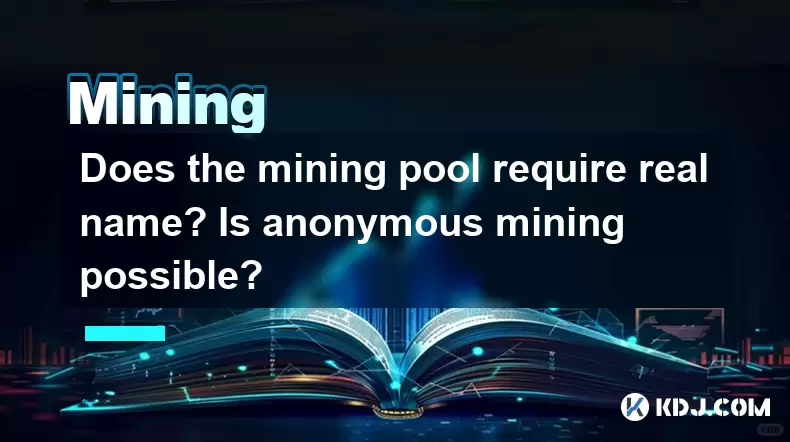
Does the mining pool require real name? Is anonymous mining possible?
May 15,2025 at 11:14am
In the realm of cryptocurrency, mining pools play a crucial role in enabling miners to combine their computational resources to increase their chances of earning rewards. A common concern among miners is the issue of privacy and anonymity, leading to questions about whether mining pools require real names and if anonymous mining is possible. This articl...
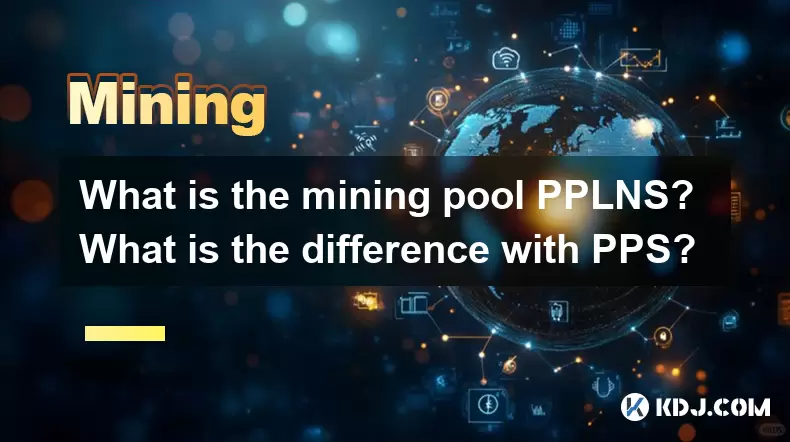
What is the mining pool PPLNS? What is the difference with PPS?
May 15,2025 at 09:35am
Introduction to Mining PoolsIn the world of cryptocurrency, mining pools are collaborative groups where miners combine their computational resources to increase their chances of solving the cryptographic puzzles required to validate transactions and add them to the blockchain. By working together, miners in a pool can share the rewards based on the cont...
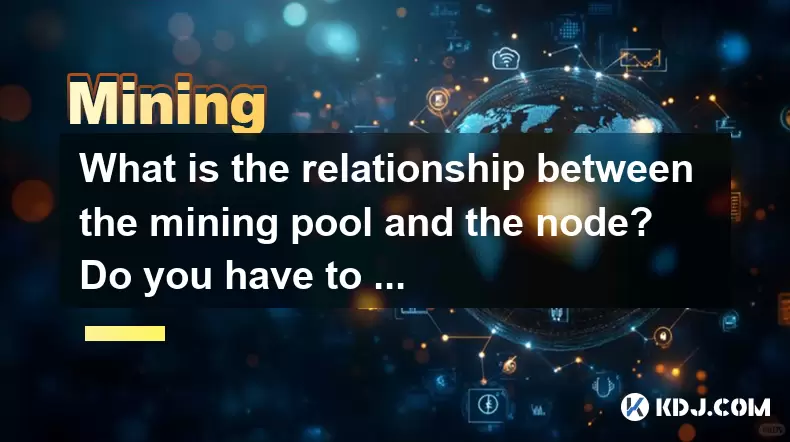
What is the relationship between the mining pool and the node? Do you have to rely on the mining pool?
May 14,2025 at 08:36pm
The relationship between a mining pool and a node in the cryptocurrency ecosystem is intricate and fundamental to understanding how blockchain networks operate. A mining pool is a group of miners who work together to solve complex mathematical problems to validate transactions and add them to the blockchain. On the other hand, a node is a computer conne...

How to choose a mining pool? Is a large mining pool or a small mining pool better?
May 14,2025 at 11:49pm
Choosing the right mining pool is a crucial decision for any cryptocurrency miner. The choice between a large mining pool and a small mining pool can significantly impact your mining experience and profitability. In this article, we will explore the factors to consider when selecting a mining pool and discuss the advantages and disadvantages of both lar...

What is the reason for the high rejection rate of the mining pool? How to optimize?
May 15,2025 at 11:35am
The high rejection rate of a mining pool is a common concern for many cryptocurrency miners. Rejection rates refer to the percentage of submitted shares that are rejected by the mining pool. A high rejection rate can significantly impact a miner's profitability and efficiency. In this article, we will explore the reasons behind high rejection rates and ...

What is the difference between the mining pool and cloud mining? Which is more suitable for novices?
May 14,2025 at 08:56pm
Mining in the cryptocurrency world refers to the process of verifying transactions and adding them to the blockchain, which in turn releases new coins as a reward. Two popular methods of participating in this process are through mining pools and cloud mining. Both have their own set of characteristics, advantages, and disadvantages. This article aims to...

Does the mining pool require real name? Is anonymous mining possible?
May 15,2025 at 11:14am
In the realm of cryptocurrency, mining pools play a crucial role in enabling miners to combine their computational resources to increase their chances of earning rewards. A common concern among miners is the issue of privacy and anonymity, leading to questions about whether mining pools require real names and if anonymous mining is possible. This articl...

What is the mining pool PPLNS? What is the difference with PPS?
May 15,2025 at 09:35am
Introduction to Mining PoolsIn the world of cryptocurrency, mining pools are collaborative groups where miners combine their computational resources to increase their chances of solving the cryptographic puzzles required to validate transactions and add them to the blockchain. By working together, miners in a pool can share the rewards based on the cont...

What is the relationship between the mining pool and the node? Do you have to rely on the mining pool?
May 14,2025 at 08:36pm
The relationship between a mining pool and a node in the cryptocurrency ecosystem is intricate and fundamental to understanding how blockchain networks operate. A mining pool is a group of miners who work together to solve complex mathematical problems to validate transactions and add them to the blockchain. On the other hand, a node is a computer conne...

How to choose a mining pool? Is a large mining pool or a small mining pool better?
May 14,2025 at 11:49pm
Choosing the right mining pool is a crucial decision for any cryptocurrency miner. The choice between a large mining pool and a small mining pool can significantly impact your mining experience and profitability. In this article, we will explore the factors to consider when selecting a mining pool and discuss the advantages and disadvantages of both lar...
See all articles


























![[Ronnie Trading Guide]-2025.5.15-Bitcoin continues to consolidate at a high level, and only patient investors will get a return on time~ [Ronnie Trading Guide]-2025.5.15-Bitcoin continues to consolidate at a high level, and only patient investors will get a return on time~](/uploads/2025/05/15/cryptocurrencies-news/videos/ronnie-trading-guidebitcoin-continues-consolidate-level-patient-investors-return-time/682574fd46a42_image_500_375.webp)





























































